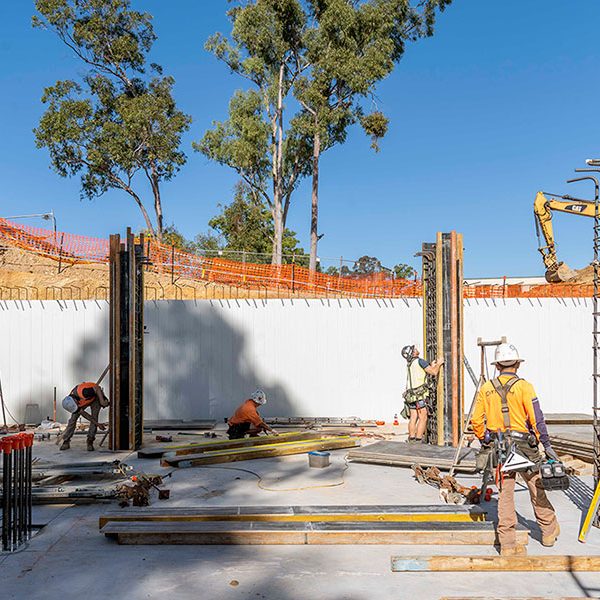When planning a construction project, it is important to consider which building materials will deliver the best results.
While bricks have been an industry staple in construction for centuries, many Australians are turning to a concrete material called Hebel as an alternative.
Both materials are strong options to consider using in a construction project, as they offer distinctive aesthetic styles and logistical advantages.
Here, we discuss the differences and benefits of Hebel vs brick.
Hebel vs Brick: What Are They?
Hebel
Hebel is an Autoclaved Aerated Concrete (AAC) which comes in panel or block form. It can be made using readily-available raw materials such as sand, cement, lime and gypsum, which are combined with water and an expansion agent to create the finished product.
Hebel contains air pockets that help with thermal and sound insulation, as well as an anti-corrosion steel reinforcement for added strength.
Hebel can easily be carved, sculpted or cut into large panels for both floor and roof construction. A standard Hebel panel is the equivalent in size of 75 traditional bricks.
Brick
Bricks are rectangular, uniformly-sized blocks of baked clay. They are made from minerals found in clay and shale, which are fired in an industrial furnace and then secured with mortar.
Bricks can be used to create indoor walls as well as external wall cladding, and are a classic choice of builders all over the world. Brickwork construction has been used for thousands of years, creating buildings which stand the test of time.
Bricks come in a variety of earthy tones, and offer a classic and enduring visual style.
What are the Benefits of Hebel vs Brick?
Hebel and brick are both staple materials in the construction industry due to their versatility, durability, and relative ease of manufacturing.
However, they do each offer some different advantages.
Key advantages of brick include:
- Durability – the longevity and element-resistance offered by brick is second to none
- Low-maintenance – brick is the most effective exterior material at controlling and minimising moisture, reducing the risk of mold and rot
- Classic colours – the various earthy hues of brick provide traditional, homely colours
Key advantages of Hebel include:
- Fast installation – with a 3m Hebel panel being the equivalent of 90 bricks, installing Hebel requires less labour and creates less mess than brick
- Thermal-efficiency – Hebel panels are highly effective insulators, helping reduce heating and cooling costs
- Rendered appearance – Hebel panels offer a modern, clean and rendered appearance
If budgeting is a priority, it is also worth noting that brick is typically more expensive than Hebel. Supplying and installing a single-storey 20-square home with brick can cost anywhere from $12,000 to $15,000, whereas an equivalent Hebel installation can range from $9,000 to $11,000*.
Hebel vs Brick: The Verdict
Brick and Hebel are both strong options to consider using in a construction project. They have distinctive visual styles, with Hebel offering a modern, clean appearance and brick providing a homely, timeless aesthetic.
Ultimately, the decision to use Hebel vs brick will depend on the specific requirements of your project, as well as your preferred aesthetic.
At Solutions Built, our construction team have extensive experience working with both Hebel and brick to create custom-designed homes and buildings.
If you are considering the benefits of Hebel vs brick for your next project, we can help evaluate which material will work best for your desired goals. Get in touch with us today, and let’s discuss how we can assist with bringing your project to life.
*”How to select the right building materials for your home.” Homely. 23 May. 2016.
